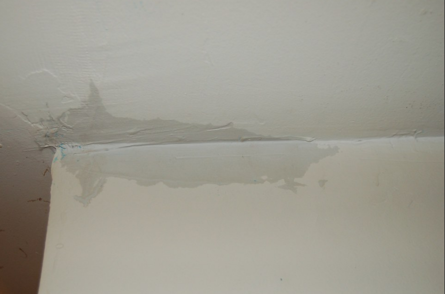Do's & Don'ts of Water Damages.
Do's & Don'ts of Water Damages.
Blog Article
What are your ideas concerning Reducing Your Risk Of Water And Fire Damage At Home?

Water provides life, yet water breach on some components where it's not intended to be can result in damage and trouble. In enhancement, homes with water damage smell old as well as moldy.
Water can come from numerous sources like tropical cyclones, floodings, ruptured pipes, leaks, and also sewer concerns. If you have water damage, it's better to have a functioning expertise of safety precautions. Right here are a couple of guidelines on how to deal with water damage.
Do Prioritize Residence Insurance Coverage
Seasonal water damage can originate from floods, seasonal rainfalls, and also wind. There is also an incident of a sudden flooding, whether it came from a defective pipe that unexpectedly bursts into your house. To protect your home, obtain home insurance policy that covers both acts of God such as all-natural tragedies, as well as emergency situations like broken plumbing.
Do Not Forget to Shut Off Utilities
When catastrophe strikes and also you're in a flood-prone area, switch off the main electrical circuit. Shutting off the power stops
electrical shocks when water is available in as water works as a conductor. Don't fail to remember to turn off the main water line valve as a method to avoid even more damages.
If the floodwaters are getting high, maintain your furniture steady as they can move around and trigger added damages.
Do Remain Proactive as well as Heed Weather Condition Notifies
Storm floods can be very unforeseeable. If you live in an area afflicted by floodings, remain positive and prepared in all times. If you live near a body of water like a creek, lake, or river , listen to the news and also discharge cautions. Obtain your belongings and crucial papers from the ground floor as well as basement, then put them in a safe place and the highest possible level.
Don't Neglect the Roofing System
Your roofing professional must take treatment of the faulty gutters or any type of other indications of damages or weakening. An examination will certainly stop water from flowing down your walls and also soaking your ceiling.
Do Pay Attention to Little Leakages
A ruptured pipeline doesn't happen in a vacuum or overnight. There are warnings that can attract your interest as well as suggest to you some weakened pipes in your home. Signs of red flags in your pipes consist of bubbling paint, peeling off wallpaper, water streaks, water stains, or trickling sounds behind the walls. There are indicators that the pipe will certainly burst. Don't wait for an acceleration if you see these signs. Repair and also inspect your plumbing fixed before it leads to large damage to your home, financial resources, and also a personal headache.
Do Not Panic in Case of a Ruptured Pipeline
Timing is key when it comes to water damage. If a pipe bursts in your house, quickly closed off your primary water shutoff to reduce off the source as well as avoid more damage. Call a trustworthy water damages remediation specialist for help.
Water offers life, yet water breach on some parts where it's not expected to be can result in damage and also trouble. In addition, residences with water damages odor old and stuffy.
Seasonal water damage can come from floods, seasonal rains, and also wind. Indications of red flags in your pipes consist of gurgling paint, peeling wallpaper, water streaks, water spots, or trickling audios behind the walls. If a pipeline ruptureds in your house, right away shut off your major water shutoff to cut off the source and also protect against even more damage.
Some Do's & Don't When Dealing with a Water Damage
DO:
Make sure the water source has been eliminated. Contact a plumber if needed. Turn off circuit breakers supplying electricity to wet areas and unplug any electronics that are on wet carpet or surfaces Remove small furniture items Remove as much excess water as possible by mopping or blotting; Use WHITE towels to blot wet carpeting Wipe water from wooden furniture after removing anything on it Remove and prop up wet upholstery cushions for even drying (check for any bleeding) Pin up curtains or furniture skirts if needed Place aluminum foil, saucers or wood blocks between furniture legs and wet carpet Turn on air conditioning for maximum drying in winter and open windows in the summer Open any drawers and cabinets affected for complete drying but do not force them open Remove any valuable art objects or paintings to a safe, dry place Open any suitcases or luggage that may have been affected to dry, preferably in sunlight Hang any fur or leather goods to dry at room temperature Punch small holes in sagging ceilings to relieve trapped water (don't forget to place pans beneath!); however, if the ceiling is sagging extremely low, stay out of the room and we'll take care of it DO NOT:
Leave wet fabrics in place; dry them as soon as possible Leave books, magazines or any other colored items on wet carpets or floor Use your household vacuum to remove water Use TV's or other electronics/appliances while standing on wet carpets or floors; especially not on wet concrete floors Turn on ceiling fixtures if the ceiling is wet Turn your heat up, unless instructed otherwise

Hopefully you enjoyed our section about Ways to Reduce The Risk Of Fire And Water Damage. Thanks so much for taking a few minutes to read through our posting. So long as you liked our post if you please make sure you remember to share it. Thank you for your time. Visit again soon.
Report this page